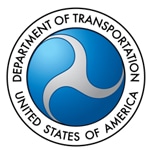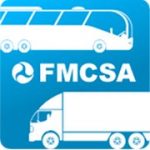Over the past 1.5 weeks, the Federal Railroad Administration has published several notices in the Federal Register. Below are portions of those postings, including: Drug and alcohol testing: Determination of minimum random testing rates for 2021 (notification of determination); Qualification and certification of locomotive engineers – miscellaneous revisions (final rule); Positive train control systems (notice of proposed rulemaking); and Fatigue risk management programs for certain passenger and freight railroads (notice of proposed rulemaking).
Drug and alcohol testing: Determination of minimum random testing rates for 2021 (notification of determination) – (published 12/15/2020)
Supplementary information:
FRA is announcing the 2021 minimum annual random drug and alcohol testing rates for covered service and MOW employees. For calendar year 2021, the minimum annual random testing rates for covered service employees will continue to be 25% for drugs and 10% for alcohol, while the minimum annual random testing rates for MOW employees will continue to be 50% for drugs and will be lowered to 10% for alcohol. Because these rates represent minimums, railroads and contractors may conduct FRA random testing at higher rates.
Discussion:
To set its minimum annual random testing rates for each year, FRA examines the last two complete calendar years of railroad industry drug and alcohol program data submitted to its Management Information System (MIS). FRA has also, however, reserved the right to consider factors other than MIS-reported data before deciding whether to lower annual minimum random testing rates. See 63 FR 71789 (Dec. 30, 1998).
Random testing rates for covered service employees
The rail industry’s random drug testing positive rate for covered service employees (employees subject to the Federal hours of service laws and regulations) remained below 1.0% for 2018 and 2019. The administrator has therefore determined the minimum annual random drug testing rate for the period January 1, 2021, through December 31, 2021, will remain at 25% for covered service employees. The industry-wide random alcohol testing violation rate for covered service employees remained below 0.5% for 2018 and 2019. Therefore, the administrator has determined the minimum random alcohol testing rate will remain at 10% for covered service employees for the period January 1, 2021, through December 31, 2021.
Random testing rates for MOW employees
MOW employees became subject to FRA random drug and alcohol testing in June 2017. See 81 FR 37894 (June 10, 2016). FRA now has MIS data for two full consecutive years of the industry-wide performance rates for MOW employees, 2018 and 2019. While FRA may lower the minimum random drug testing rate to 25% whenever the industry-wide random drug positive rate is less than 1.0 percent for two consecutive calendar years while testing at the 50% rate, FRA has reserved the right to consider other factors before deciding whether to lower annual minimum random testing rates. See 63 FR 71789 (Dec. 30, 1998).
As illustrated in the figures in the appendix below, in contrast to the drug testing positive rate for covered service employees that remained substantially below 1.0% for 2018 and 2019, the random drug testing positive rate for MOW employees is not only trending upwards, but also approaching the 1.0% positive rate threshold at which point the administrator will raise the drug testing rate under 49 CFR 219.625(d)(2). Specifically, the industry-wide random drug testing violation rate for MOW employees increased from 0.69% in 2018 to 0.8% in 2019, and MOW employees continue to have a higher positive testing rate than covered service employees.[1] The Administrator further notes that MOW employees who were performing duties for a railroad before June 12, 2017, were exempted from the pre-employment drug testing requirement. See 49 CFR 219.501(e). As such, some MOW employees may remain who have never been subject to FRA drug testing because they have not yet been randomly selected.
Taking these factors into consideration, the administrator finds it is currently not in the interest of railroad safety to lower the random drug testing rate for MOW employees. Therefore, for the period January 1, 2021, through December 31, 2021, the administrator has determined that the minimum annual random drug testing rate will continue to be 50% for MOW employees.
Because the random alcohol testing violation rate for MOW employees remained substantially below 0.5% for 2018 and 2019, and has been trending downwards, the administrator has determined that the minimum annual random alcohol testing rate will be lowered to 10% for MOW employees for the period January 1, 2021, through December 31, 2021.
Click here to read the full notice as published in the Federal Register.
Qualification and certification of locomotive engineers; miscellaneous revisions (final rule) – published 12/15/2020
Summary:
FRA is revising its regulation governing the qualification and certification of locomotive engineers to make it consistent with its regulation for the qualification and certification of conductors. The changes include: Amending the program submission process; handling engineer and conductor petitions for review with a single FRA review board (Operating Crew Review Board or OCRB); and revising the filing requirements for petitions to the OCRB. To ensure consistency throughout its regulations, FRA is also making conforming amendments to its regulations governing the control of alcohol and drug use, and the qualification and certification of conductors. The changes would reduce regulatory burdens on the railroad industry while maintaining the existing level of safety.
Dates:
This regulation is effective January 14, 2021.
Executive Summary
On May 9, 2019, FRA issued a notice of proposed rulemaking (NPRM) to amend title 49 Code of Federal Regulations (CFR) part 240, Qualification and Certification of Locomotive Engineers (part 240).[1] In response to that NPRM, FRA received three written comments.
This final rule responds to those comments and amends part 240 by: Making part 240 more consistent with the language in 49 CFR part 242, Qualification and Certification of Conductors (part 242); creating two provisions under which railroads may issue temporary locomotive engineer certifications; merging FRA’s locomotive engineer and conductor review boards; adopting aspects of part 242 for locomotive engineer certification; providing labor representatives with the ability to provide input on a railroad’s part 240 program; and allowing for and encouraging the use of electronic document submission of a railroad’s part 240 program. This final rule also makes technical amendments to part 242 to: (1) Make the requirement for calibration of audiometers used during hearing tests for conductors the same as the requirement in part 240 for locomotive engineers; and (2) conform the definition of “main track” in part 242 to the definition of “main track” in part 240.
Additionally, this final rule makes conforming amendments to title 49 CFR part 219, Control of Alcohol and Drug Use (part 219) to update two cross-references to part 240. Updating these references is necessary to ensure consistency between part 219 and part 240, as amended.
The final rule will create new costs. First, each locomotive engineer certification manager will need to review the amendments made to part 240 to ensure compliance is maintained. Second, amendments to part 240 will require each railroad to provide a copy of its part 240 plan to the president of each labor organization whenever the railroad files a submission, resubmission, or makes a material modification to its plan. Third, a railroad will need to maintain service records for certified locomotive engineers who are not performing service that requires locomotive engineer certification. For the 20-year period of analysis, the cost of the final rule will be $233,779 (undiscounted), $171,764 (PV 7%), and $200,775 (PV 3%).
The final rule will also create cost savings. First, adding clarity in part 240 and conforming language in part 240 to part 242 will reduce stakeholder burden related to review and compliance with part 240. Second, it will reduce the burden on a railroad when providing another railroad with information about a former employee’s prior service records. Third, it will update the program submission process to allow for electronic document submission, which will reduce stakeholder paperwork and submission costs related to part 240 program submissions and locomotive engineer certification petitions. Fourth, it will remove the requirement for railroads to obtain a waiver from the annual testing requirements for certified locomotive engineers who are not performing service that requires certification. For the 20-year period of analysis, the cost savings of the final rule will be $12.3 million (undiscounted), $6.9 million (PV 7%), and $9.4 million (PV 3%).
As shown in Table ES.1, the regulatory evaluation quantifies the economic impact of the final rule in terms of cost savings and new costs accruing to stakeholders. For the 20-year period of analysis, the final rule will result in a net cost savings of $12.0 million (undiscounted), $6.8 million (PV 7%), and $9.2 million (PV 3%). This final rule is an Executive Order (E.O.) 13771 deregulatory action. Details on the estimated costs of this final rule can be found in the rule’s economic analysis.
The final rule will create benefits. First, the final rule will amend the part 240 program submission process to require railroads to solicit labor input, providing for fully informed decisions by railroads. Second, it affords railroads additional time and flexibility to comply with some regulatory requirements. Third, it creates certain provisions that allow for temporary locomotive engineer certificates. Fourth, electronic filing will make information more accessible to interested stakeholders and the public. Because FRA lacks sufficient information related to these four benefits, this analysis could not accurately quantify these benefits. Therefore, the rule’s economic analysis qualitatively explains benefits.
The final rule will also reduce Governmental administrative costs, including mailing, filing, and storing costs related to amendments to part 240, by allowing the Government and stakeholders to transmit and store documents electronically.
This is just a small portion of the actual notice in the Federal Register. Click here to read the full final rule as published in the Federal Register.
Positive train control systems (notice of proposed rulemaking) – published 12/18/2020
Summary:
FRA is proposing to revise its regulations governing changes to positive train control (PTC) systems and reporting on PTC system functioning. First, recognizing that the railroad industry intends to enhance further FRA-certified PTC systems to continue improving rail safety and PTC technology’s reliability and operability, FRA proposes to modify the process by which a host railroad must submit a request for amendment (RFA) to FRA before making certain changes to its PTC Safety Plan (PTCSP) and FRA-certified PTC system. Second, to enable more effective FRA oversight, FRA proposes to: Expand an existing reporting requirement by increasing the frequency from annual to biannual; broaden the reporting requirement to encompass positive performance-related information, not just failure-related information; and require host railroads to utilize a new, standardized Biannual Report of PTC System Performance (Form FRA F 6180.152). Overall, the proposed amendments would benefit the railroad industry, the public, and FRA, by reducing unnecessary costs, facilitating innovation, and improving FRA’s ability to oversee PTC system performance and reliability, while not negatively affecting rail safety.
Dates:
Written comments must be received by February 16, 2021. FRA believes a 60-day comment period is appropriate to allow the public to comment on this proposed rule. FRA will consider comments received after that date to the extent practicable.
Addresses:
Comments: Comments related to Docket No. FRA-2019-0075 may be submitted by going to http://www.regulations.gov and following the online instructions for submitting comments.
Instructions: All submissions must include the agency name, docket number (FRA-2019-0075), and Regulation Identifier Number (RIN) for this rulemaking (2130-AC75). All comments received will be posted without change to https://www.regulations.gov; this includes any personal information. Please see the Privacy Act heading in the SUPPLEMENTARY INFORMATION section of this document for Privacy Act information related to any submitted comments or materials.
Docket: For access to the docket to read background documents or comments received, go to https://www.regulations.gov and follow the online instructions for accessing the docket.
This is just a small portion of the actual notice in the Federal Register. Click here to read the full notice of proposed rulemaking as published in the Federal Register.
Fatigue risk management programs for certain passenger and freight railroads (notice of proposed rulemaking) – published 12/22/2020
Summary:
Pursuant to the Rail Safety Improvement Act of 2008, FRA proposes to issue regulations requiring certain railroads to develop and implement a Fatigue Risk Management Program, as one component of the railroads’ larger railroad safety risk reduction programs.
Dates:
Written comments must be received by February 22, 2021. Comments received after that date will be considered to the extent practicable without incurring additional expense or delay.
Addresses:
Comments related to Docket No. FRA-2015-0122 may be submitted by going to http://www.regulations.gov and follow the online instructions for submitting comments.
Instructions: All submissions must include the agency name, docket name and docket number or Regulatory Identification Number (RIN) for this rulemaking (2130-AC54). Note that all comments received will be posted without change to http://www.regulations.gov, including any personal information provided. Please see the Privacy Act heading in the SUPPLEMENTARY INFORMATION section of this document for Privacy Act information on any submitted comments or materials.
Docket: For access to the docket to read background documents or comments received, go to http://www.regulations.gov.
Introduction and Executive Summary:
Purpose of Rulemaking
This proposed rule is part of FRA’s efforts to improve rail safety continually and to satisfy the statutory mandate of Section 103 of the Rail Safety Improvement Act of 2008 (RSIA).[1] That section, codified at 49 U.S.C. 20156, requires Class I railroads; railroad carriers with inadequate safety performance (ISP), as determined by the Secretary; and railroad carriers that provide intercity rail passenger or commuter rail passenger transportation to develop and implement a safety risk reduction program to improve the safety of their operations. The section further requires a railroad’s safety risk reduction program to include a “fatigue management plan” meeting certain requirements.
This proposed rule, if finalized, would fulfill RSIA’s mandate for railroads to include fatigue management plans in their safety risk reduction programs by requiring railroads to develop and implement Fatigue Risk Management Programs (FRMPs).[2] As proposed, a railroad would implement its FRMP through an FRMP plan.
Under this proposed rule, consistent with the mandate of Section 20156, an FRMP is a comprehensive, system-oriented approach to safety in which a railroad determines its fatigue risk by identifying and analyzing applicable hazards and takes action to mitigate, if not eliminate, that fatigue risk.[3] As proposed, a railroad would be required to prepare a written FRMP plan and submit it to FRA for review and approval. A railroad’s written FRMP plan would become part of its existing safety risk reduction program plan. A railroad would also be required to implement its FRA-approved FRMP plan, conduct an internal annual assessment of its FRMP, and consistent with Section 20156’s mandate, update its FRMP plan periodically. As part of a railroad safety risk reduction program, a railroad’s FRMP would also be subject to assessments by FRA.
This is just a small portion of the actual notice in the Federal Register. Click here to read the full notice of proposed rulemaking as published in the Federal Register.
 The U.S. Department of Transportation’s Federal Railroad Administration (FRA) today issued a final rule, extending the amount of time freight rail equipment can be left off-air (meaning parked with its air brake system depressurized) before requiring a new brake inspection, which is expected to reduce the number of idling locomotives. The final rule incorporates longstanding waivers for brake inspections, tests and equipment, while clarifying existing regulations and removing outdated provisions.
The U.S. Department of Transportation’s Federal Railroad Administration (FRA) today issued a final rule, extending the amount of time freight rail equipment can be left off-air (meaning parked with its air brake system depressurized) before requiring a new brake inspection, which is expected to reduce the number of idling locomotives. The final rule incorporates longstanding waivers for brake inspections, tests and equipment, while clarifying existing regulations and removing outdated provisions. On Nov. 13, 2017, the Department of Transportation (DOT) published a final rule that, among other items, expands DOT’s current drug testing panel to include certain semi-synthetic opioids (i.e., hydrocodone, oxycodone, hydromorphone, oxymorphone). Testing for methylenedioxyethylamphetamine (MDEA) has been removed while methylenedioxyamphetamine (MDA) has been added as an initial test analyte.
On Nov. 13, 2017, the Department of Transportation (DOT) published a final rule that, among other items, expands DOT’s current drug testing panel to include certain semi-synthetic opioids (i.e., hydrocodone, oxycodone, hydromorphone, oxymorphone). Testing for methylenedioxyethylamphetamine (MDEA) has been removed while methylenedioxyamphetamine (MDA) has been added as an initial test analyte. The Federal Transit Administration (FTA) issued the
The Federal Transit Administration (FTA) issued the  WASHINGTON – The U.S. Department of Transportation’s Federal Motor Carrier Safety Administration (FMCSA) announced the adoption of a final rule that will improve roadway safety by employing technology to strengthen commercial truck and bus drivers’ compliance with hours-of-service regulations that prevent fatigue.
WASHINGTON – The U.S. Department of Transportation’s Federal Motor Carrier Safety Administration (FMCSA) announced the adoption of a final rule that will improve roadway safety by employing technology to strengthen commercial truck and bus drivers’ compliance with hours-of-service regulations that prevent fatigue. 
 WASHINGTON – U.S. Transportation Secretary Anthony Foxx today announced a final rule for the safe transportation of flammable liquids by rail. The final rule, developed by the Pipeline and Hazardous Materials Safety Administration (PHMSA) and Federal Railroad Administration (FRA), in coordination with Canada, focuses on safety improvements that are designed to prevent accidents, mitigate consequences in the event of an accident, and support emergency response.
WASHINGTON – U.S. Transportation Secretary Anthony Foxx today announced a final rule for the safe transportation of flammable liquids by rail. The final rule, developed by the Pipeline and Hazardous Materials Safety Administration (PHMSA) and Federal Railroad Administration (FRA), in coordination with Canada, focuses on safety improvements that are designed to prevent accidents, mitigate consequences in the event of an accident, and support emergency response. The Federal Railroad Administration announced a Final Rule (FR) amending its existing Passenger Train Emergency Preparedness regulations.
The Federal Railroad Administration announced a Final Rule (FR) amending its existing Passenger Train Emergency Preparedness regulations.